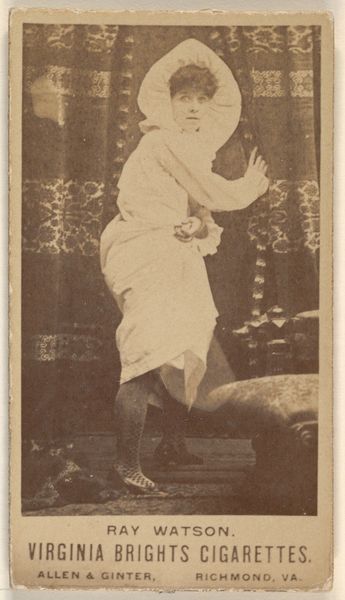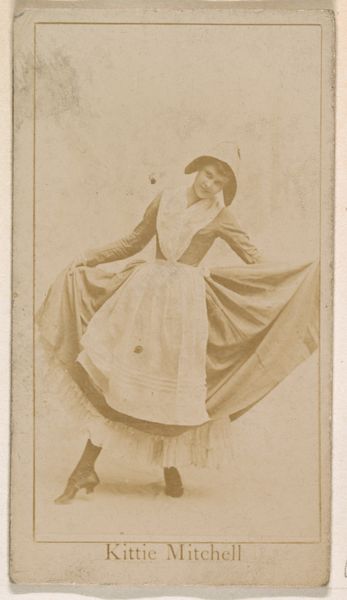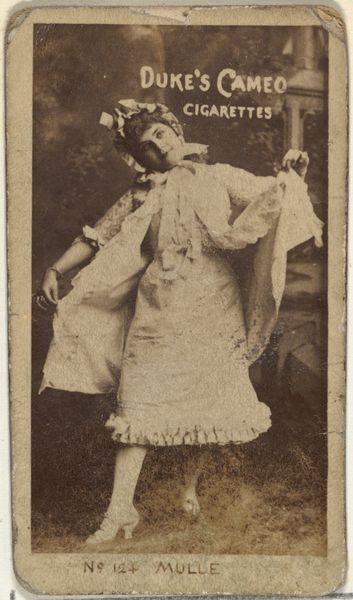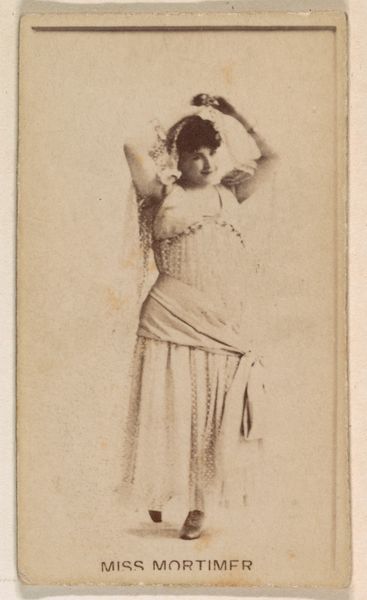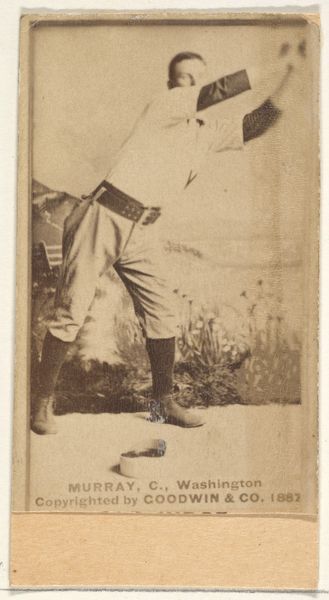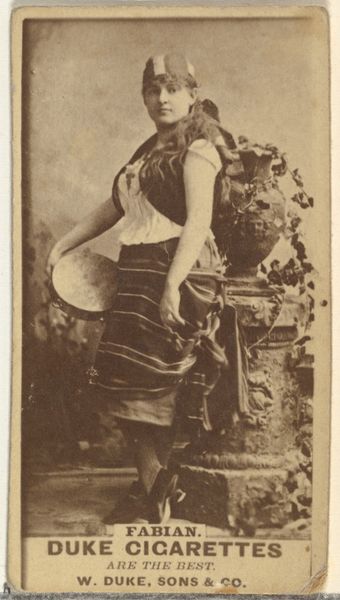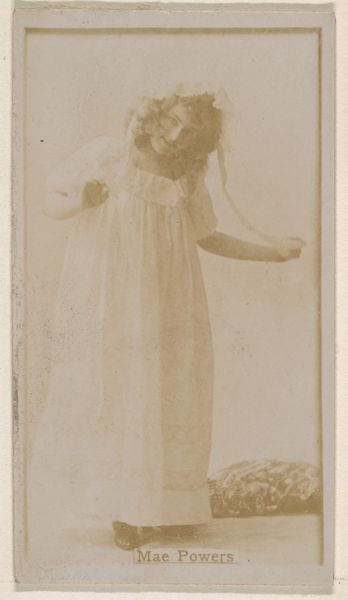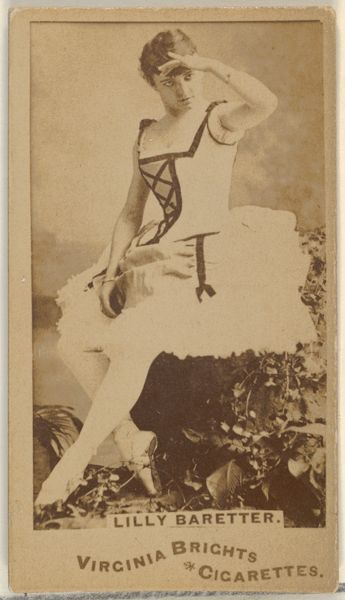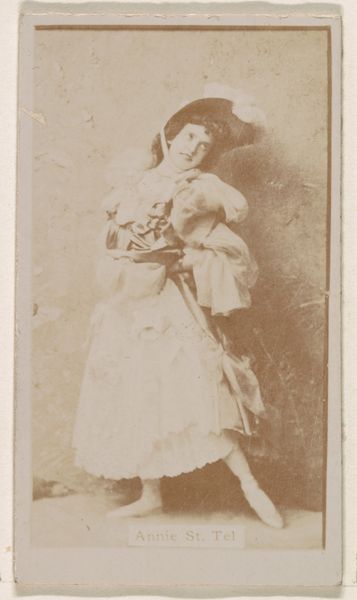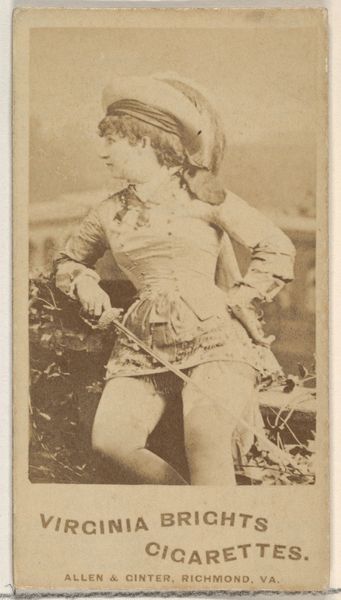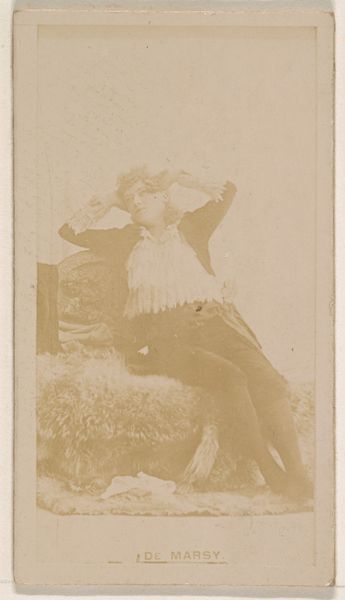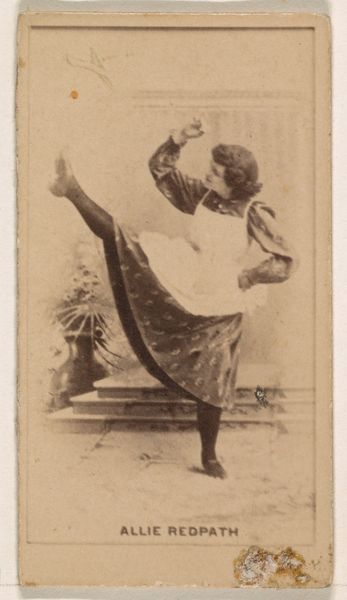
daguerreotype, photography
#
portrait
#
daguerreotype
#
photography
Dimensions: Image: 19.9 × 23.7 cm (7 13/16 × 9 5/16 in.)
Copyright: Public Domain
Curator: Isn’t it peculiar? This photographic calling card, "A Mlle Schlusser," made in 1861 by André-Adolphe-Eugène Disdéri. It’s quite striking, this multiple exposure on a single sheet, like a captured dance sequence. Editor: There's a stiff formality that contrasts intriguingly with the implied movement. Almost like a doll brought to life, repeatedly, within a sepia dream. Curator: It’s a daguerreotype, you know, so there is that almost magical quality in its making. The woman’s costume is what gets me though, it screams about the many contradictions of the epoch, doesn’t it? How fashion simultaneously confined and declared feminine identities! The dress appears like a stage costume...a theatrical moment perfectly preserved in the Victorian era. Editor: Absolutely. Consider that fashion created roles; performance was constant. These portraits of Mlle Schlusser offer commentary on gender and social positioning within a society increasingly obsessed with capturing and circulating images of itself. Note her gestures, the way she's framed: this repetition subtly speaks to standardization... even commodification. Curator: Precisely, the artistry exists in its capacity to reveal societal contradictions, not necessarily in a formal kind of 'beauty.' Each frame gives an insight into movement as possibility. Photography offering something painting never could at the time! Almost futurist! Editor: This form also implies that identities could be manufactured or controlled, a sentiment shared by critical voices during the rise of photography's use in portraiture and anthropometry. There’s unease mixed in with its charm, don't you think? Curator: A ghostly presence from another age… But aren’t we all ghostly presences, ourselves? Perhaps photography just renders our impermanence visible a little sooner, that's all. Editor: True, but now she haunts not just our galleries, but countless screens as a reminder that we can see art not merely for its aesthetic quality but also as social commentary. Curator: Perhaps that’s all art really is! Food for thought...
Comments
No comments
Be the first to comment and join the conversation on the ultimate creative platform.
